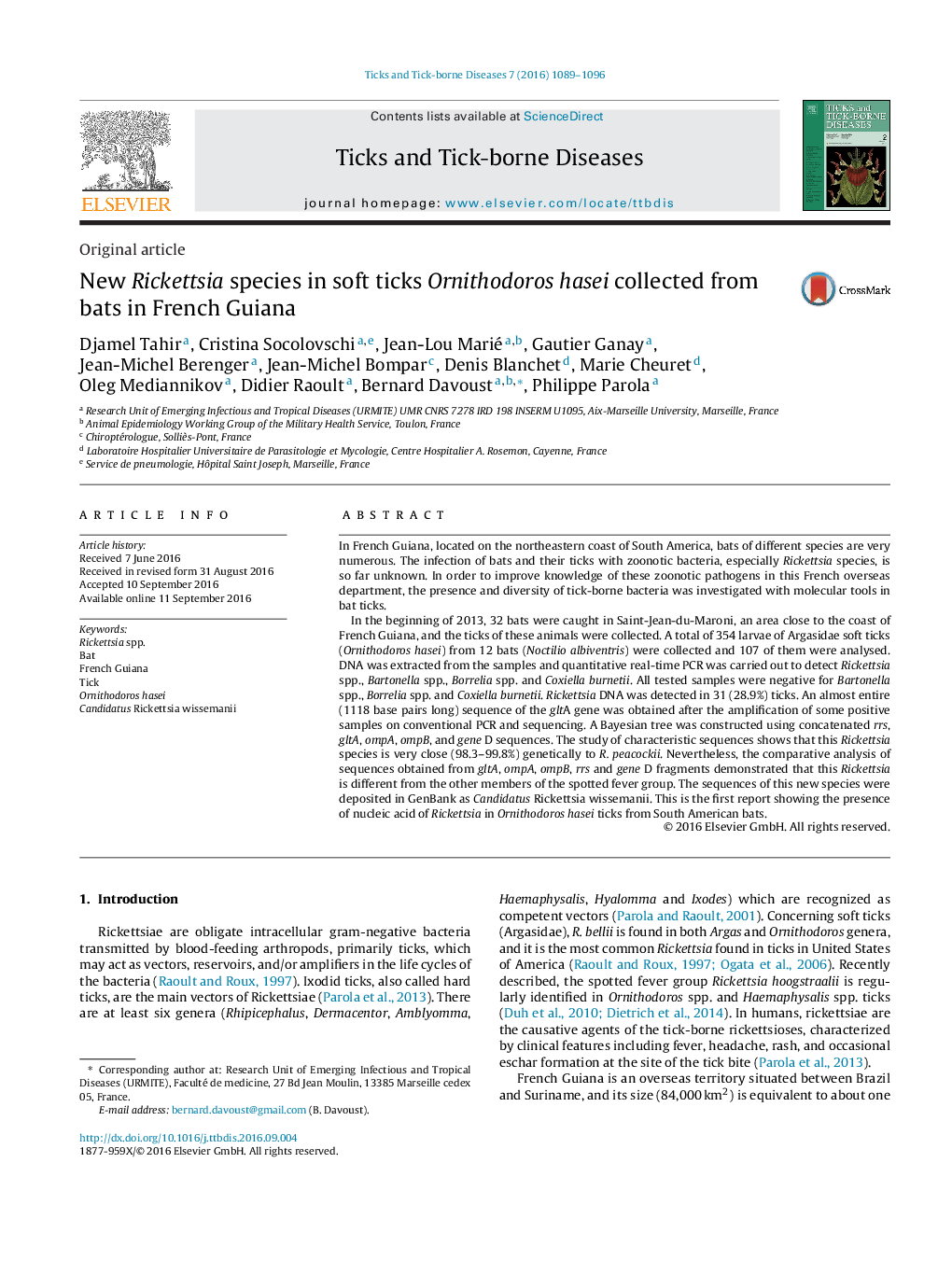| Article ID | Journal | Published Year | Pages | File Type |
|---|---|---|---|---|
| 5546494 | Ticks and Tick-borne Diseases | 2016 | 8 Pages |
â¢A novel Rickettsia was detected in Ornithodoros hasei ticks feeding on Noctilio albiventris bats.â¢Sequencing and phylogenetic analysis revealed that this novel Rickettsia species is genetically very close to Rickettsia peacockii.â¢This is the first report showing the presence of nucleic acid of Rickettsia sp. in Ornithodoros hasei ticks from South American bats.â¢Candidatus Rickettsia wissemanii is proposed to name this microorganism.
In French Guiana, located on the northeastern coast of South America, bats of different species are very numerous. The infection of bats and their ticks with zoonotic bacteria, especially Rickettsia species, is so far unknown. In order to improve knowledge of these zoonotic pathogens in this French overseas department, the presence and diversity of tick-borne bacteria was investigated with molecular tools in bat ticks.In the beginning of 2013, 32 bats were caught in Saint-Jean-du-Maroni, an area close to the coast of French Guiana, and the ticks of these animals were collected. A total of 354 larvae of Argasidae soft ticks (Ornithodoros hasei) from 12 bats (Noctilio albiventris) were collected and 107 of them were analysed. DNA was extracted from the samples and quantitative real-time PCR was carried out to detect Rickettsia spp., Bartonella spp., Borrelia spp. and Coxiella burnetii. All tested samples were negative for Bartonella spp., Borrelia spp. and Coxiella burnetii. Rickettsia DNA was detected in 31 (28.9%) ticks. An almost entire (1118 base pairs long) sequence of the gltA gene was obtained after the amplification of some positive samples on conventional PCR and sequencing. A Bayesian tree was constructed using concatenated rrs, gltA, ompA, ompB, and gene D sequences. The study of characteristic sequences shows that this Rickettsia species is very close (98.3-99.8%) genetically to R. peacockii. Nevertheless, the comparative analysis of sequences obtained from gltA, ompA, ompB, rrs and gene D fragments demonstrated that this Rickettsia is different from the other members of the spotted fever group. The sequences of this new species were deposited in GenBank as Candidatus Rickettsia wissemanii. This is the first report showing the presence of nucleic acid of Rickettsia in Ornithodoros hasei ticks from South American bats.
